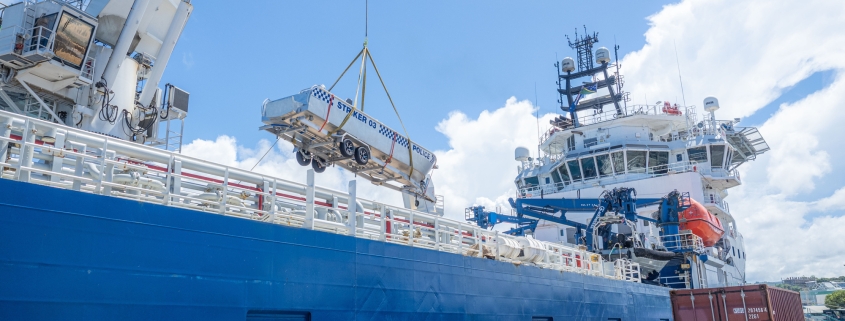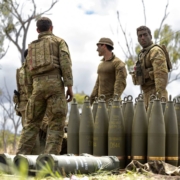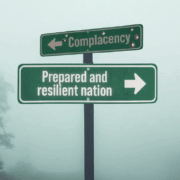Think laterally: government air and shipping services can boost Australian defence
US President Donald Trump’s unconventional methods of conducting international relations will compel the next federal government to reassess whether the United States’ presence in the region and its security assurances provide a reliable basis for Australia’s national defence strategy. There is reason to doubt that Trump’s US would unequivocally help defend Australia in a war.
Australia must become more self-reliant in defence while increasingly demonstrating that it is a valuable ally to the US worth American commitment to its security. A dilemma is how to strengthen defence while minimising cost.
Imaginative thinking is needed. Conventional boundaries between the civil and military domains should be removed.
The federal government recently said it was prepared to acquire Regional Express to avoid the airline’s financial collapse. But the government could nationalise the airline as a defence enterprise. The airline’s staff—including pilots, engineers and air and ground crews—could mainly be permanent and reserve defence personnel. It could provide passenger and freight services to all major remote and regional Australian communities, improving their access to essential services and markets. The airline could also provide transport for defence personnel and stores, and for their families on remote bases. The resource and other sectors could also be incentivised to use the airline.
The airline could eventually take over national responsibility for emergency aeromedical services, search and rescue, border security, maritime surveillance, aerial firefighting and other specialised national aviation tasks. It would benefit from an expansion of the federal government’s remote airstrip upgrade program. The airline, its facilities, and personnel would also be available for use in civil defence such as national emergencies and in wartime.
Such an airline would effectively be an auxiliary air force. It would provide new options for government, and increased capability for defence planners if the aircraft types that were operated also had useful military variants. The cost of operating the airline would be covered by revenue and from other parts of the federal budget.
The federal government announced a pilot program in September to create a ‘maritime strategic fleet’ to ensure supply of essential resources during national emergencies. If this strategic fleet were a defence enterprise, the ships could be captained and principally crewed by permanent and reserve defence personnel, with a narrower focus on providing support to our naval operations as well as those of the US and other allies.
The concept of a strategic fleet could be changed to that of an auxiliary naval fleet, still using defence personnel, which conducted commercial-like activities that supported Australia’s engagement and geostrategic interests in our near regions. This could also reduce some of the pressures on the navy.
The icebreaker operated by the government’s Antarctic Division could become one of several that are used to increase Australia’s presence and activities in Antarctica. The US and other allies could contribute to the cost of operating icebreakers, as these vessels would support their own Antarctic programs. And Australia could have cruise and cargo ships support our Pacific development and engagement programs. The ships could also be partly crewed by Pacific islanders to maximise regional economic benefits. They would also be designed to support humanitarian, littoral and supply operations. Such commercial activities would cover some of the operating costs of these ships.
Our defence force must be based on a new form of service, where our personnel are neither permanent nor reserve as organised by the current model. A new model of service would attract people because it offers a mixture of civil and military opportunities, more career options and longevity and does not isolate the person from broader civil occupations or professions. The defence force would increase its size and broadening its skills and experience while contributing to the national economy.
National mobilisation cannot meet the sudden needs of national defence. And conscription or requisition won’t be accepted if the foundations for civil defence are not already there. Mixed purpose industries can foster a civic culture of service. They would also ensure broader skills and training in defence personnel and broader society.
We need to change our thinking about defence spending as another demand on strained budgets to how defence and the economy support and reinforce each other. Our national activities should act as triple levers, adding to our means of defence, national resilience and thus to strategic deterrence.
Australia must become more self-reliant for our national defence while meaningfully contributing more to collective security. That requires us to become more imaginative with how we respond to our strategic risks, and exploit our strategic advantages, to avoid simply burdening the national economy further. Australia needs to bring together its civil and military domains. Only then can we remain a free, prosperous and secure nation.





